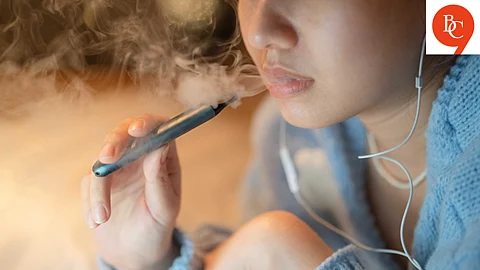

With its fruity flavours that it comes with, USB-like designs, and ‘less harmful’ marketing, vaping has rapidly become the smoking choice of Gen Z and young millennials. But beneath the haze lies a truth just as concerning as that of traditional cigarettes.
From Cigarettes to Vapes: The Shift in Smoking Culture
Cigarettes, once a staple of college corridors and late-night stress busters, have slowly fallen out of favour — replaced by e-cigarettes, puff bars, and sleek vapes that fit seamlessly in back pockets and social reels.
For many, vaping feels cleaner, smells better, and is seen as socially acceptable, especially in urban metros and nightlife circuits. Aesthetically pleasing vape kits in pastel hues, flavours like mango ice or mint blast, and influencers casually puffing on camera — all contribute to the narrative that vaping is a harmless trend.
Why Gen Z Thinks Vaping Is ‘Better’
“No smell, no ash.” Vapes don’t leave the stench of tobacco, making them more discreet.
“It's just flavoured steam, right?” Many believe vaping is simply water vapour — not realizing the chemicals inside.
“It’s better than smoking actual cigarettes.” This belief is widely marketed and blindly accepted, especially by first-time users.
“Helps with anxiety.” Some use it as a coping mechanism, thinking it's a low-risk escape.
The Truth: Vaping Isn’t Harmless — Just Different
Despite the glossy image, vaping still delivers nicotine — the same highly addictive substance found in cigarettes. In fact, a single vape pod can contain as much nicotine as 20 cigarettes, depending on the brand.
The Flavour Trap
Fruity and candy-flavoured vapes may seem innocent — but those very chemicals, when inhaled, can cause cell damage and irritation.
The illusion of flavour safety has led to more first-time users trying vapes than cigarettes, without realizing the long-term impact.
What the Numbers Say
A 2024 survey by the Indian Council of Medical Research (ICMR) found that 42% of urban youth aged 18–25 had tried vaping at least once.
Teen vaping is rising fast in Tier 1 and Tier 2 cities despite a ban on e-cigarettes in India since 2019.
Many users get vapes via online marketplaces, smuggled imports, or “disguised” nicotine-free vape pens that still contain harmful compounds.
The Psychological Side of Vaping
Vaping, much like cigarettes, becomes a crutch for anxiety, social awkwardness, or peer pressure. But once the dopamine wears off, nicotine withdrawal can lead to irritability, mood swings, and deeper anxiety — trapping users in a cycle of dependence.
Banned But Booming: India’s Vape Paradox
Though India banned the sale of e-cigarettes under the Prohibition of Electronic Cigarettes Act, 2019, the market is far from clean.
Grey markets, disguised packaging, and lack of enforcement continue to make vapes accessible in hostels, parties, and college hangouts.
